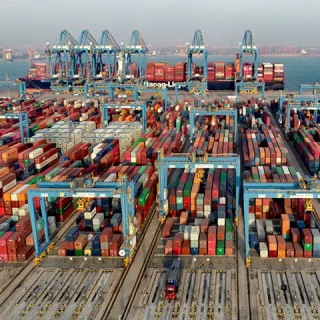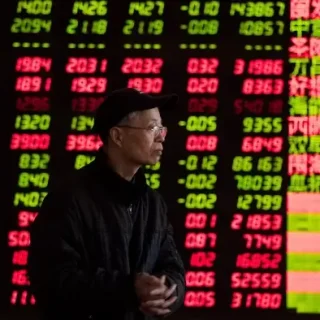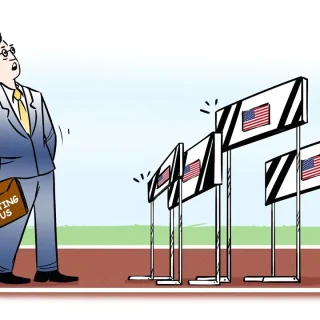In early April 2025, former President Donald Trump officially enacted a sweeping new tariff regime that is actively reshaping the global economic landscape. Following the declaration of a national emergency under the International Emergency Economic Powers Act (IEEPA), a universal 10% tariff on all imports took effect on April 5. Just days later, on April 9, elevated country-specific tariffs were implemented, targeting key U.S. trading partners with increases as high as 46%. The fallout has been immediate—triggering market turbulence, corporate realignment, and mounting geopolitical friction.
Confirmed Tariff Breakdown
According to official U.S. government documentation (whitehouse.gov), the new tariff structure includes:
- China: 34%
- European Union: 20%
- Japan: 24%
- United Kingdom: 10%
- Taiwan: 32%
- South Korea: 25%
- Switzerland: 31%
- Vietnam: 46%
- All other countries: Baseline 10% tariff
Shockwaves Through Corporate America
Since the U.S. tariffs took effect, markets have experienced sharp and ongoing turbulence. The financial and strategic impact has deepened beyond initial forecasts, affecting both Wall Street and corporate boardrooms.
- The cumulative market drop is now estimated to be approaching 15%, as investor sentiment continues to deteriorate amid trade uncertainty and global retaliation.
- On announcement day alone, the S&P 500 fell 4.9%, the Dow Jones dropped nearly 1,700 points, and the Nasdaq Composite slid over 6%, marking the worst trading day since 2020.
(Source: Investopedia)
- Big Tech companies like Amazon, Meta, and Microsoft have revised earnings forecasts, using the tariff environment as a reset point amid rising costs.
(Source: Business Insider)
- MGA Entertainment, a major U.S. supplier, is accelerating its shift of 40% of manufacturing away from China to India, Vietnam, and Indonesia.
(Source: Reuters)
- Retailers, manufacturers, and logistics-driven companies are urgently reassessing sourcing strategies, renegotiating pricing, and adjusting procurement contracts to offset cost pressures.
- Goldman Sachs raised its recession probability to 45%, citing tariff-driven inflation, supply-side volatility, and increased financial tightening.
(Source: WSJ)

Global Retaliation and Diplomatic Fallout
Key trading partners responded swiftly:
- China implemented a 34% retaliatory tariff on U.S. imports.
- The EU condemned the move and hinted at proportional countermeasures.
- The UK, Japan, and others have initiated high-level reviews of trade responses.
This escalation has increased the risk of a full-scale global trade war, raising questions about long-term diplomatic and economic alignment.
Strategic Considerations for Corporates and Investors
Trump’s tariff policy is more than a headline—it’s a catalyst for restructuring how companies and investors operate globally. The new environment demands proactive strategy on several fronts:
Supply Chain Realignment: Businesses are exploring friend-shoring and nearshoring options to avoid penalized jurisdictions.
Jurisdictional Structuring: Corporate groups may consider shifting entity bases to minimize tariff exposure.
Pricing and Forecasting: Financial models must be adjusted to reflect rising import costs and geopolitical unpredictability.
Cross-Border Investment: Increased trade friction may shift FDI trends toward neutral or bilateral-aligned regions.

Strategic Jurisdictional Shifts and Structuring Responses
The recent tariff implementations have prompted multinational corporations to reevaluate their operational jurisdictions and corporate structures. Companies are exploring relocating manufacturing and assembly operations to countries with more favorable trade terms to mitigate tariff impacts. For instance, MGA Entertainment, a major U.S. toymaker, is accelerating its shift of production from China to India, Vietnam, and Indonesia to reduce exposure to Chinese tariffs. Similarly, automakers like Volvo and Volkswagen are considering expanding manufacturing facilities in the U.S. to circumvent auto import tariffs.
Historically, major shifts in the global economic environment—such as sudden tariff hikes or sweeping trade policy changes—have prompted high-net-worth individuals to reassess their global exposure. In times of uncertainty, it’s common to see increased interest in contingency planning, whether that involves relocating assets or operations, diversifying across jurisdictions, gaining access to more stable markets, or simply building flexibility into long-term strategies.
For corporate service providers and fiduciaries, this trend underscores the importance of advising clients on jurisdictional diversification and structuring strategies that align with the evolving global trade landscape. Proactively addressing these considerations can help mitigate risks associated with tariff-induced market volatility and ensure compliance with international trade regulations.
What Lies Ahead
Trump’s tariff surge isn’t just shifting prices—it’s redrawing the global map of trade, risk, and corporate strategy. As supply chains are rerouted and investment flows rebalanced, companies are being pushed to rethink where and how they operate. From redomiciling entities and reevaluating holding structures to reassessing compliance frameworks and cross-border operations, adaptability has become the new currency of global business. For those who prepare strategically, this shift may be an opportunity to build smarter, more resilient global structures in an increasingly fragmented world.
#GlobalTrade #TrumpTariffs #InvestmentStrategy #CorporateStructuring #Geopolitics #CrossBorderBusiness #OutboundInvestment #FiduciaryStrategy #SupplyChainRisk #TariffImpact










